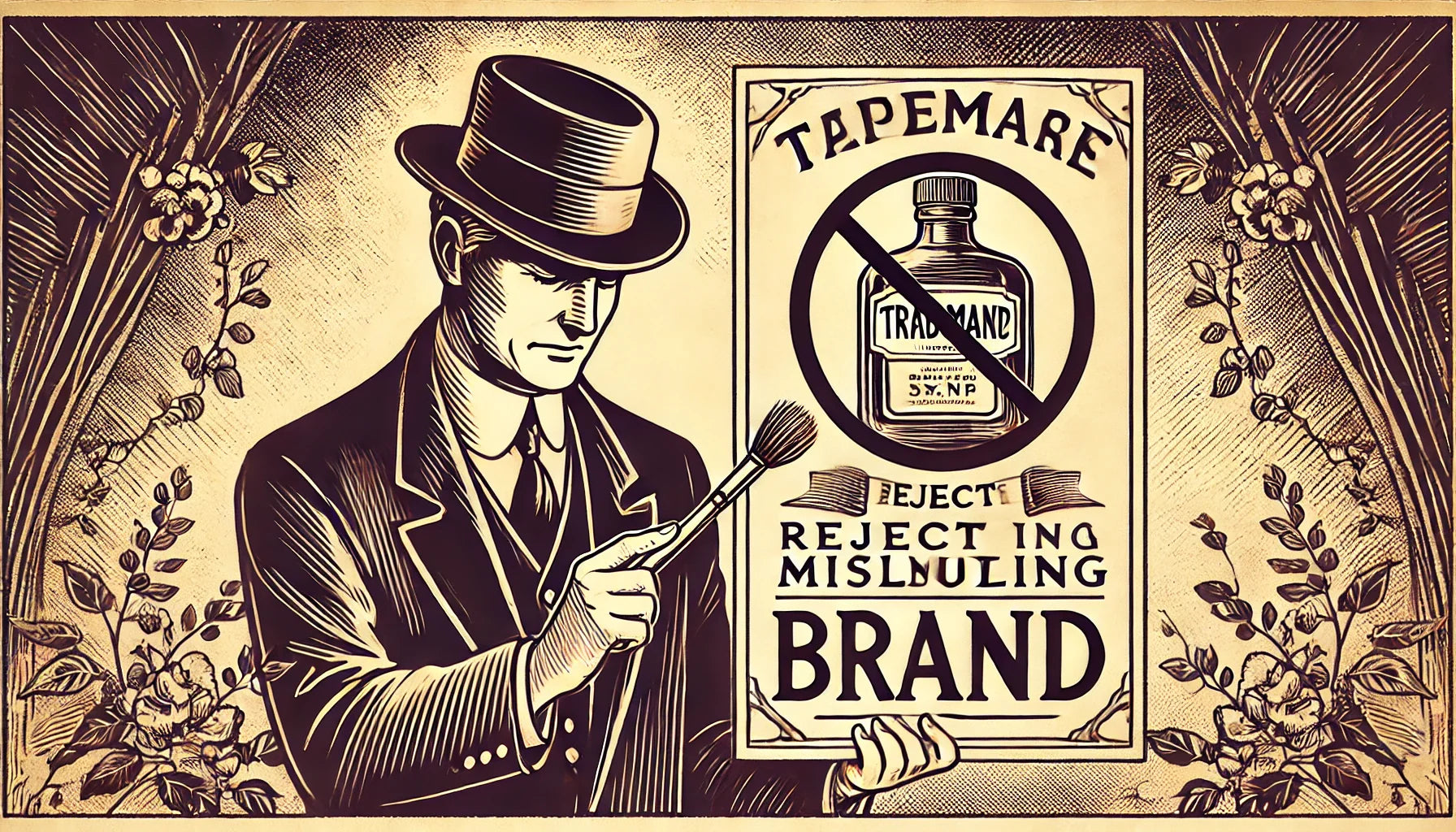This article takes a deep dive into the fascinating world of patents and shed some light on the difference between a provisional and nonprovisional patent.
If you've ever come up with a brilliant idea or invention, you know how crucial it is to protect your intellectual property. That's where patents come in handy! So, what exactly is a patent? Well, simply put, a patent is a legal document that grants exclusive rights to the creator of a new invention for a specific period. These rights allow the inventor to prevent others from making, selling, or using their invention without their permission. That's pretty powerful, right? Now, let's dig deeper into the main focus of our discussion—provisional and nonprovisional patents.
These are two different types of patents that serve distinct purposes. Understanding how they differ is essential for any inventor looking to safeguard their innovative ideas. So, grab your thinking caps, and let's unravel the intriguing world of provisional and nonprovisional patents!
What is a Provisional Patent?
Are you passionate about creating groundbreaking inventions? Well, if you are, then you've probably heard about patents. Patents, my friends, are like superheroes for your brilliant ideas. They protect your inventions from being stolen or copied, giving you the exclusive rights to make, use, and sell them. Today, I want to shed some light on a particular type of patent – the provisional patent. So, what exactly is a provisional patent?
A provisional patent is a temporary, yet powerful, form of patent protection. It serves as a placeholder for your invention while you work on perfecting it or seek further funding. It provides you with a filing date and allows you to use the term "patent pending." How cool is that? One of the biggest advantages of a provisional patent is that it gives you a way to establish an official record of your invention's conception. It acts as proof that you were the first to come up with that brilliant idea. This is crucial in the world of patents, where being the first to invent is highly valued. However, it's important to note that a provisional patent does not grant you the full legal rights and protections of a nonprovisional patent. It's more like a stepping stone towards obtaining a nonprovisional patent, which we'll talk about in a moment.
Another thing to keep in mind is that a provisional patent has a shorter lifespan compared to a nonprovisional patent. It lasts for one year, during which you must file a corresponding nonprovisional patent application to enjoy continued protection. If you fail to do so, your provisional patent will expire, and your invention will lose its patent-pending status. Yikes! Now, you might be wondering, "Why bother with a provisional patent at all? Can't I just go straight for a nonprovisional patent?" Well, my friend, the answer depends on your situation. Filing for a provisional patent is generally quicker, easier, and cheaper than filing for a nonprovisional patent. It provides you with an earlier filing date, which can be crucial in the world of patents. Plus, it allows you to market your invention as "patent pending" while you continue to refine it or seek funding. This can give potential investors or licensees more confidence in your invention. However, if you're confident that your invention is ready for prime time and you have the resources to pursue a nonprovisional patent, then by all means, go for it!
A nonprovisional patent offers stronger legal protection and is the ultimate goal for most inventors. So, there you have it, folks – a brief introduction to the world of provisional patents. They're like the first draft of your invention's superhero story, giving you that early protection and a foot in the door. Just remember, it's essential to understand the limitations of a provisional patent and move towards a nonprovisional patent before it's too late. Keep inventing and protecting those brilliant ideas! Stay tuned for more patent-related insights.
What is a Nonprovisional Patent?
When it comes to protecting your inventions, one option you have is filing for a patent. But did you know that there are different types of patents? In this blog post, we're going to talk specifically about nonprovisional patents and what sets them apart from provisional patents. A nonprovisional patent, also known as a utility patent, is the standard patent that most inventors apply for. It provides the inventor with the exclusive rights to their invention for a period of 20 years from the filing date. This means that during this time, no one else can make, use, or sell the patented invention without the inventor's permission.
Unlike a provisional patent, which only lasts for a year, a nonprovisional patent offers longer-term protection. This can be beneficial for inventors who want to ensure that their invention is safeguarded for a significant period of time. To obtain a nonprovisional patent, inventors need to submit a formal application to the United States Patent and Trademark Office (USPTO). This application includes a detailed description of the invention, along with any necessary illustrations or diagrams. It is important to note that the application process for a nonprovisional patent can be more complex and time-consuming compared to a provisional patent application.
One key difference between a nonprovisional patent and a provisional patent is that a nonprovisional patent requires a thorough examination by the USPTO. This examination ensures that the invention meets all the necessary legal and technical requirements for patentability. If the patent examiner determines that the invention is novel, useful, and non-obvious, the nonprovisional patent will be granted. Another advantage of a nonprovisional patent is that it provides stronger legal protection compared to a provisional patent. In case of infringement, the patent owner can take legal action and seek damages. This level of protection can be crucial for inventors who want to commercialize their invention or secure licensing agreements with other companies.
In summary, a nonprovisional patent is the standard patent that offers longer-term protection for inventors and their inventions. It requires a formal application, thorough examination, and provides stronger legal protection compared to a provisional patent. Understanding the difference between provisional and nonprovisional patents is essential for inventors to make informed decisions about the type of patent that best suits their needs.
Key Differences Between Provisional and Nonprovisional Patents:
When it comes to protecting your new invention, filing for a patent is the way to go. But did you know that there are different types of patents? One of the main distinctions is between a provisional patent and a nonprovisional patent. Let's dive into the key differences between these two types.
First off, let's talk about what a provisional patent is. A provisional patent is a temporary type of patent application that provides a filing date and allows you to use the term "patent pending." It gives you some level of protection for your invention while you gather more information or refine your invention before filing a nonprovisional patent application.
Now, a nonprovisional patent is the standard type of patent application. This is what most people think of when they hear the word "patent." It provides full protection for your invention and can potentially grant you exclusive rights to your invention for up to 20 years from the filing date.
One of the key differences between a provisional and a nonprovisional patent is the duration. A provisional patent has a lifespan of only one year from the date of filing. If you want to maintain protection beyond that timeframe, you'll need to file a nonprovisional patent application before the one-year mark.
Another important difference is the formal requirements. While a nonprovisional patent application requires thorough documentation of your invention, including detailed descriptions and drawings, a provisional patent application is less formal. It allows you to provide a more basic description of your invention, giving you some flexibility in the early stages of your invention's development. When it comes to legal protection, a provisional patent offers some level of protection, but it does not grant you the same level of enforceable rights as a nonprovisional patent. A nonprovisional patent offers stronger legal protection, allowing you to take legal action against anyone who infringes on your patent rights.
So, how do you choose the right type of patent for your invention? Well, it depends on your specific situation. If you have a fully developed and ready-to-go invention, filing a nonprovisional patent application might be the best option. On the other hand, if you're still in the early stages of developing your invention and need more time to gather information or make improvements, a provisional patent can provide some initial protection and flexibility. In conclusion, understanding the difference between a provisional and nonprovisional patent is crucial for inventors. It's important to weigh the benefits and limitations of each type and determine which one aligns with your invention's current stage of development and your long-term goals.
Ultimately, filing for the right type of patent can ensure that your invention is properly protected and give you the peace of mind to bring your innovation to the world. Choosing the Right Type of Patent Deciding whether to file a provisional or nonprovisional patent application can be a crucial decision for inventors.
It's important to consider various factors to ensure you choose the right type of patent for your invention. Here are some key considerations:
1. Time Sensitivity: If you want to secure an early filing date while you continue to refine your invention, a provisional patent might be suitable. It allows you to establish a priority date and gives you up to 12 months to prepare and file a nonprovisional patent application. On the other hand, if you're confident that your invention is fully developed and ready for protection, a nonprovisional patent would be a better choice.
2. Budget Constraints: Provisional patents generally have lower filing fees compared to nonprovisional patents. This can be advantageous if you have a limited budget and need some time to secure additional funding or develop your invention further. However, keep in mind that a provisional patent would still require a nonprovisional filing within the 12-month period if you want to maintain patent protection.
3. Immediate Legal Protection: Nonprovisional patents offer immediate legal protection once granted. This means you can enforce your rights against infringers and potentially prevent them from profiting from your invention. If safeguarding your invention as soon as possible is a priority, a nonprovisional patent is the way to go.
4. Formal Requirements: Nonprovisional patents have stricter formal requirements compared to provisional patents. This includes providing detailed descriptions, claims, and drawings that fully disclose and define your invention. If you have comprehensive documentation prepared or can afford assistance from a patent attorney, a nonprovisional patent may be the better choice.
5. Commercialization Plans: Consider your commercialization plans for your invention. If you intend to license or sell your invention to others, a nonprovisional patent may provide stronger protection and increase its market value. On the other hand, if you are primarily interested in maintaining trade secrets or testing the market before committing to expensive patent filings, a provisional patent can be a viable option.
Ultimately, the choice between a provisional and nonprovisional patent is highly dependent on your specific circumstances and goals. It's crucial to consult with a qualified patent attorney or patent agent who can guide you through the process and help you make an informed decision. Understanding the difference between provisional and nonprovisional patents is essential for inventors seeking to protect their intellectual property. By carefully considering the factors discussed in this article, you can make an educated choice and take the necessary steps to ensure your invention receives the appropriate patent protection.
So, that's the lowdown on provisional and nonprovisional patents! Understanding the difference between these two types of patents is crucial for inventors and innovators who want to protect their ideas and inventions. In conclusion, a provisional patent is a temporary, one-year protection that allows inventors to establish an early filing date for their invention. It provides inventors with some level of legal protection and gives them more time to further develop their idea before filing a nonprovisional patent application. However, it is important to note that a provisional patent does not automatically turn into a nonprovisional patent. On the other hand, a nonprovisional patent is a full and formal patent application that undergoes a thorough examination by the patent office. It provides inventors with stronger legal protection and, if granted, gives them exclusive rights to their invention for a longer period of time.
When choosing the right type of patent, inventors should consider factors such as their budget, the stage of development of their invention, and their long-term goals. Filing a provisional patent may be a cost-effective option for inventors in the early stages of their project, while a nonprovisional patent offers stronger protection and is necessary for inventors who are ready to fully commercialize their invention. In the end, whether you choose a provisional or nonprovisional patent, the most important thing is to file a patent application to safeguard your intellectual property. We hope this article has shed some light on the differences between these two types of patents and will help you make an informed decision about protecting your invention. Remember, patenting your invention can be a complex process, so consulting with a patent attorney or professional is highly recommended to ensure you fully understand the requirements and implications of each type of patent. Good luck with your invention and happy patenting!





